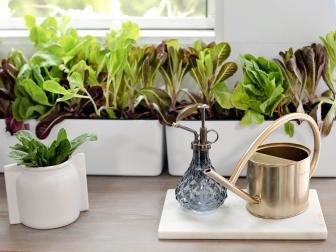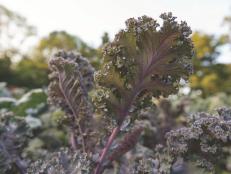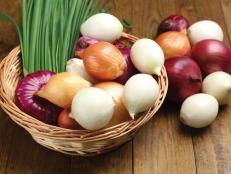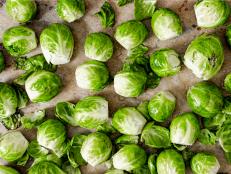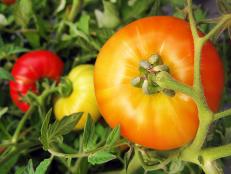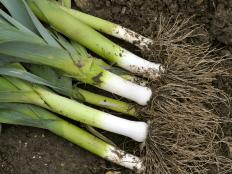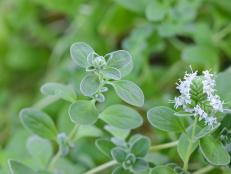How to Plant, Grow and Harvest Swiss Chard
Swiss chard is a colorful addition to a cool-season garden that is packed with nutrients. Learn how to plant, grow and use this surprisingly simple superfood.

Shutterstock/Victoria_Hunter
The Swiss chard variety 'Peppermint' has bright green leaves and purple-pink stems.

What is Swiss Chard?
Swiss chard is a leafy green vegetable that provides a variety of health benefits and can give your fall or early spring garden a beauty boost, as well. Beta vulgaris var. cicla is, actually, a beet that grows the leafy top but does not form a bulb-shaped root. It’s a nutrient-dense food, low in calories but high in vitamins K, A and C along with magnesium and is a good natural source of iron, copper, potassium, vitamin E and calcium. Swiss chard is also high in antioxidants, which can help prevent certain health conditions, and fiber, which can help maintain your weight, lower your risk of certain cancers and promote heart health. The flavor of the leaves is similar to spinach, and it’s a good substitute in recipes that call for fresh spinach.
If that’s not enough to convince you to grow it, consider the allure of its colors. Different varieties of the large, hearty, dark green leaves grow from the ground with sturdy, brightly colored stems, adding splashes of yellow, orange, red, burgundy, pink, purple or white to garden beds or containers. It’s easy to grow and provides fresh greens for cooking for several months during the growing season.
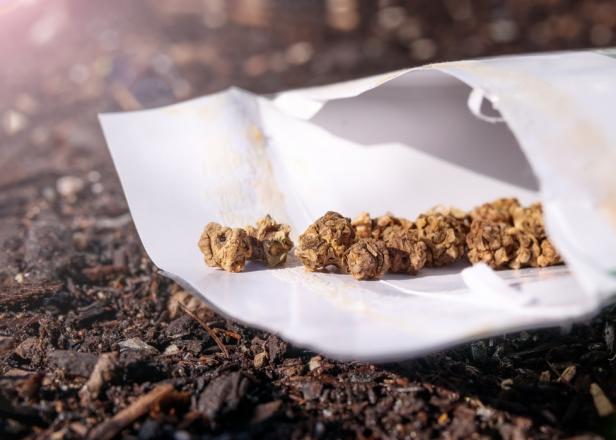
Shutterstock/sophiecat
Each crinkly seed of Swiss chard is actually a small cluster of seeds.
When and How to Plant Swiss Chard
In most areas of the US, plant Swiss chard early in spring, or in late summer to enjoy a fall crop. Swiss chard likes full sun and well-drained, fertile soil that is amended with compost or a good, balanced fertilizer.
You can start seeds indoors, under lights, about six weeks before the last frost date in your area, or wait until after the last frost to sow seeds in the ground. Transplants are also available at garden centers and nurseries.
To start seeds indoors, it’s easiest to grow them in a tray of individual cells filled with a good seed-starting mix. Each crinkly seed of Swiss chard is actually a small cluster of seeds, so place only one in each cell. Water the soil, place under grow lights and keep the soil moist. Seedlings emerge in seven to 10 days and are ready to transplant into the ground after about six weeks.
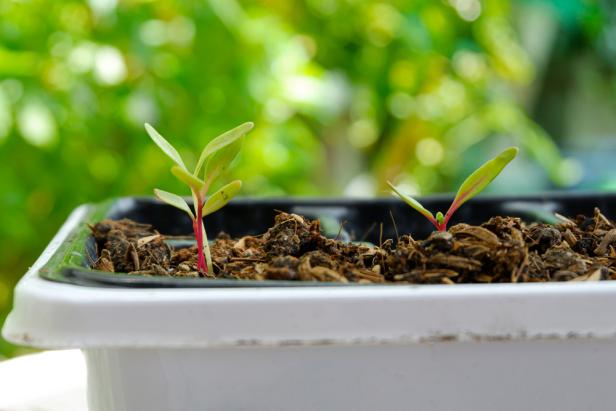
Shutterstock/ipjaay
Swiss chard seeds can be started indoors before the area's last frost. Seedlings emerge in 7 - 10 days and are ready to transplant into the ground after about six weeks.
Outdoors, sow seeds directly into the ground after the last frost date in rows about 1/2-inch deep and about 2 inches apart. They should germinate in a few days. When the leaves are 4–6 inches tall, thin the row to about 8–10 inches apart to give each plant plenty of room to grow. Depending on the variety, individual Swiss chard plants can get to be 2 feet tall.
Nursery transplants can go in the ground after the danger of heavy frost has passed. Space them with plenty of room for each plant to grow.
Companion Planting With Swiss Chard
Being mindful of what grows where in a kitchen garden — especially if you garden in raised beds where space is often at a premium — can mean the difference between a prolific growing season and a harvest that’s just meh. Some plants benefit from growing with likable companions; others are stunted by being too near certain neighbors.
A lot of the most popular kitchen garden staples grow well alongside Swiss chard: lettuce, radishes, beans, tomatoes, the brassicas (cabbage, kale, broccoli) and alliums (onions, garlic, leeks).
Some garden experts advise, however, that melons, cucumbers, corn and potatoes compete with Swiss chard for the nutrients in the soil, so they don’t make good garden companions. Chard and mint grow well together, but you should avoid planting it alongside other herbs.
A–Z Advice for Companion Planting in Your Vegetable Garden 16 Photos
Find detailed info and links for specific companion plants and planting techniques for popular vegetable garden crops in our alphabetical list, from beets to zucchini.
Swiss Chard Care
Like most leafy vegetables, Swiss chard grows best when it receives consistent watering. Keeping the beds clear of weeds also reduces the competition for available moisture in the soil, and, as always, a layer of mulch can help retain moisture and keep the weeds from sprouting.
Swiss chard is susceptible to some of the common garden pests. Aphids suck the juices from tender new growth; a strong spray of water can blast them off the plants, or spray them with insecticidal soap. Slugs and snails are also attracted to the leaves and can be picked off by hand. Tiny holes in the leaves may signal the presence of flea beetles. Floating row covers should keep them from finding your plants.
Downy mildew or other fungal diseases may also affect the plants in a garden bed. Proper watering and good air circulation around the plants can keep these at bay.
Swiss chard is generally slower to bolt, or flower and go to seed, than other leafy greens. You can keep it growing by harvesting often and removing the outer leaves. If the plant sends up a flower stalk, cut it off to get a few more weeks of growth.

Shutterstock/Ahturner
The rib in the center of each leaf is tough, so the fleshy leaf can be stripped off or the rib can be cut out with a sharp knife before cooking. After you trim the leaves, you can cup up the ribs to be prepared separately.
How to Harvest and Preserve Swiss Chard
If you’ve sown Swiss chard in the ground, you’ll likely need to thin the plants when they grow to about 4 inches tall. You can use the young plants you thin from the rows right away in salads, stir-fries and other dishes where they can be a good substitute for spinach.
When plants grow to about 8–12 inches, harvest by cutting the outer leaves an inch or so above the ground, leaving the smaller leaves to continue to grow. Use them right away, or store them in the refrigerator wrapped in a damp towel in an open or ventilated plastic bag. Fresh Swiss chard leaves should last for several days in the refrigerator’s crisper drawer.
How to Cook With Swiss Chard
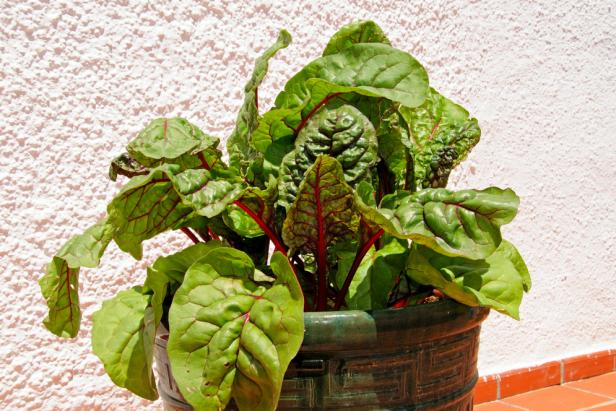
Shutterstock/Caron Badkin
Swiss chard can be grown in a container, where its colorful leaves can be harvested and used for cooking, or it can add a decorative touch to container plantings.
The rib in the center of each leaf is tough, so the fleshy leaf can be stripped off or the rib can be cut out with a sharp knife before cooking. Swiss chard can be used like spinach in a cooked dish, but the leaves are more robust than spinach leaves, so they will need a longer cooking time. The leaves can be sauteed, steamed, braised, roasted or tossed into hearty soups. And don’t toss those ribs after you cut them out. They can be cut up and prepared as a separate dish. For a saute using the cut-up stems and leaves in the same dish, start the stems in the pan first, so they can begin to soften, before adding the leaves.
Swiss Chard Varieties
Gardeners have choices when it comes to growing Swiss chard, though they all require about the same growing times and conditions. There may be variations in flavor between one variety and another, and some of the large leaves may be more deeply wrinkled than others. The main differences are in the colors, which may be significant if you’re planning to add the vegetable to your decorative containers. Popular varieties include:
‘Fordhook Giant’: This Swiss chard standard has white stems and green, heavily textured leaves. Other white-stemmed, white-veined varieties include ‘Winter King,’ ‘Geneva’ and ‘Lucullus.’
‘Peppermint’: Pink-striped stems with dark green, white-veined leaves.
‘Oriole’: This variety has bright orange or golden yellow stems and veins throughout its deep green leaves.
‘Ruby Red’: Bright red stems add a colorful touch in recipes. Other deep red varieties include ‘Rhubarb’ and ‘Burgundy.’
‘Bright Lights’: A mixture of seed varieties that grow their bright, robust stems in pink, white, red, orange, violet and yellow, making them a good choice for decorative containers as well as a tasty vegetable.

.-Battle-on-the-Beach-courtesy-of-HGTV.-.jpg.rend.hgtvcom.196.196.suffix/1714761529029.jpeg)






